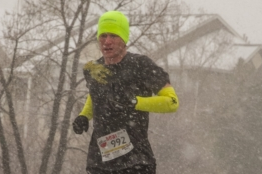
My family and I travelled for roughly the first two weeks of June. We began the trip with a week in Myrtle Beach, SC where I kept up my training miles, despising the humidity, loving the ample oxygen. From there, we drove to Charlotte, NC where my daughter and I caught a direct flight to Rome, Italy. This father-daughter trip had been in the making for several months and I’d decided early on that I wouldn’t log miles while we were there.
When you’re travelling on your own with a child, there are just too many variables that would mean big problems if she and I weren’t together. For example, maybe while I’m out for a short run, housekeeping shows up at our room, sees her alone, and is concerned, or the hotel fire alarm goes off. The scenario of a child alone in a hotel room in a country where we don’t speak the language and something like the aforementioned circumstances occurring is bad. So, I designated it as a week off and it turned out my legs were ready for a short rest. However, there were a few running notes that I picked up along the way.
We spent our time in Rome and Venice and I had assumed there would be people running in The Eternal City but not in the City of Canals. This turned out to be the opposite. Once we were there, it was easy to see why.
The traffic in Rome is on the verge of pedestrian-hostile and the sidewalks sometimes exist only by definition. In some cases, it’s a narrow strip of cobblestones that are slightly darker than the street. The streets in Venice are fairly empty of people in the early mornings and without any cars to worry about, it would be a pleasant place to run. There weren’t steady numbers of people running in Venice, but a few.
Among the sites that I hoped to see in Rome was the Circus Maximus, or the ancient chariot racing track. Though primarily known for the chariot races, it did hold some long-distance foot races. In its prime, it was around 600M long and 140M wide along its axes. By comparison, a modern 400M running track would be around 150M long and 90M wide. The stands around the Maximus held anywhere from 150,000 to 250,000 people, which would put it among some of our modern world’s largest stadiums.
Most of it you can access for free. The bulk of the site is grass with a small dirt path on the perimeter. At one end of the track is a section that’s gated off and requires a ticket, which was well worth it. Some of the ancient structure stands there, along with several pieces of sculptures that have been found and saved.
Walking from the lower chambers of the facility through the old tunnel onto the grass and dirt area of the track, presumably as the ancient competitors would have, still sent a small spark of adrenaline through my veins. Though the original track is estimated to be 6M below the current ground surface (following its racing days it was eventually turned into an agricultural area), I ran around 50M along the path, just to say I’d done it. Were I to go back to Rome with my running shoes, I would plan to do several laps there one morning. It wouldn’t be in front of thousands of spectators or with the pageantry, but it’d be fun.
Now back in Colorado, and working my way back into training…
